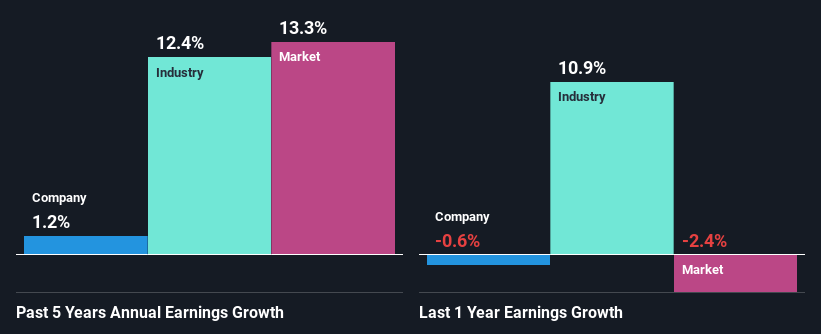BorgWarner’s (NYSE:BWA) stock is up by 4.3% over the past month. We wonder if and what role the company’s financials play in that price change as a company’s long-term fundamentals usually dictate market outcomes. Particularly, we will be paying attention to BorgWarner’s ROE today.
ROE or return on equity is a useful tool to assess how effectively a company can generate returns on the investment it received from its shareholders. In simpler terms, it measures the profitability of a company in relation to shareholder’s equity.
See our latest analysis for BorgWarner
How Is ROE Calculated?
Return on equity can be calculated by using the formula:
Return on Equity = Net Profit (from continuing operations) ÷ Shareholders’ Equity
So, based on the above formula, the ROE for BorgWarner is:
12% = US$702m ÷ US$6.1b (Based on the trailing twelve months to December 2023).
The ‘return’ refers to a company’s earnings over the last year. Another way to think of that is that for every $1 worth of equity, the company was able to earn $0.12 in profit.
What Is The Relationship Between ROE And Earnings Growth?
So far, we’ve learned that ROE is a measure of a company’s profitability. Based on how much of its profits the company chooses to reinvest or “retain”, we are then able to evaluate a company’s future ability to generate profits. Assuming everything else remains unchanged, the higher the ROE and profit retention, the higher the growth rate of a company compared to companies that don’t necessarily bear these characteristics.
BorgWarner’s Earnings Growth And 12% ROE
To start with, BorgWarner’s ROE looks acceptable. Further, the company’s ROE is similar to the industry average of 11%. Despite this, BorgWarner’s five year net income growth was quite flat over the past five years. We reckon that there could be some other factors at play here that’s limiting the company’s growth. Such as, the company pays out a huge portion of its earnings as dividends, or is faced with competitive pressures.
Next, on comparing with the industry net income growth, we found that BorgWarner’s reported growth was lower than the industry growth of 12% over the last few years, which is not something we like to see.
Earnings growth is a huge factor in stock valuation. The investor should try to establish if the expected growth or decline in earnings, whichever the case may be, is priced in. By doing so, they will have an idea if the stock is headed into clear blue waters or if swampy waters await. Has the market priced in the future outlook for BWA? You can find out in our latest intrinsic value infographic research report.
Is BorgWarner Using Its Retained Earnings Effectively?
BorgWarner’s low three-year median payout ratio of 24% (implying that the company keeps76% of its income) should mean that the company is retaining most of its earnings to fuel its growth and this should be reflected in its growth number, but that’s not the case.
Moreover, BorgWarner has been paying dividends for at least ten years or more suggesting that management must have perceived that the shareholders prefer dividends over earnings growth. Upon studying the latest analysts’ consensus data, we found that the company’s future payout ratio is expected to drop to 9.9% over the next three years. Regardless, the ROE is not expected to change much for the company despite the lower expected payout ratio.
Summary
On the whole, we do feel that BorgWarner has some positive attributes. However, given the high ROE and high profit retention, we would expect the company to be delivering strong earnings growth, but that isn’t the case here. This suggests that there might be some external threat to the business, that’s hampering its growth. That being so, the latest analyst forecasts show that the company will continue to see an expansion in its earnings. Are these analysts expectations based on the broad expectations for the industry, or on the company’s fundamentals? Click here to be taken to our analyst’s forecasts page for the company.
Have feedback on this article? Concerned about the content? Get in touch with us directly. Alternatively, email editorial-team (at) simplywallst.com.
This article by Simply Wall St is general in nature. We provide commentary based on historical data and analyst forecasts only using an unbiased methodology and our articles are not intended to be financial advice. It does not constitute a recommendation to buy or sell any stock, and does not take account of your objectives, or your financial situation. We aim to bring you long-term focused analysis driven by fundamental data. Note that our analysis may not factor in the latest price-sensitive company announcements or qualitative material. Simply Wall St has no position in any stocks mentioned.
